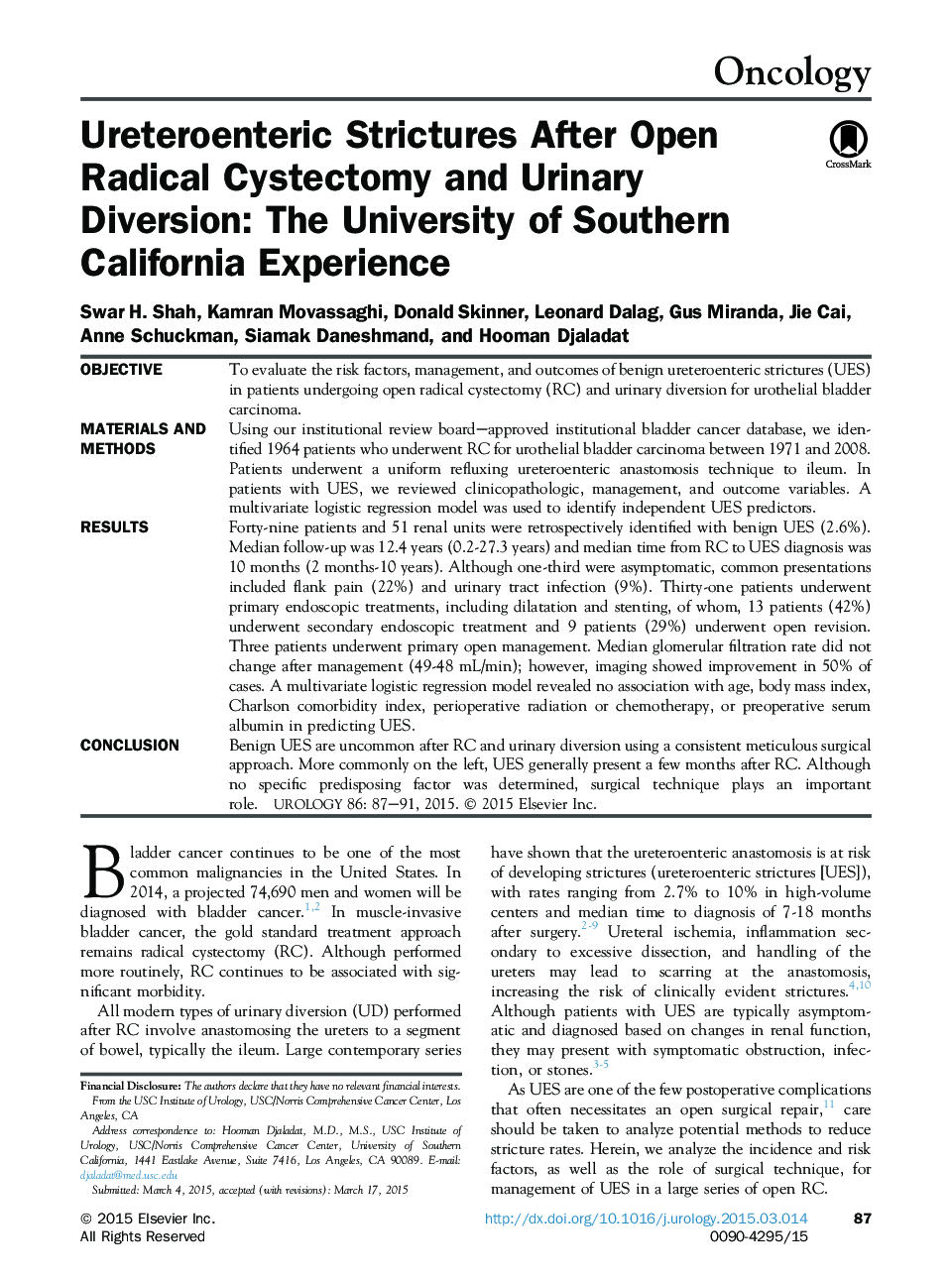| کد مقاله | کد نشریه | سال انتشار | مقاله انگلیسی | نسخه تمام متن |
|---|---|---|---|---|
| 3898499 | 1250302 | 2015 | 5 صفحه PDF | دانلود رایگان |
ObjectiveTo evaluate the risk factors, management, and outcomes of benign ureteroenteric strictures (UES) in patients undergoing open radical cystectomy (RC) and urinary diversion for urothelial bladder carcinoma.Materials and MethodsUsing our institutional review board–approved institutional bladder cancer database, we identified 1964 patients who underwent RC for urothelial bladder carcinoma between 1971 and 2008. Patients underwent a uniform refluxing ureteroenteric anastomosis technique to ileum. In patients with UES, we reviewed clinicopathologic, management, and outcome variables. A multivariate logistic regression model was used to identify independent UES predictors.ResultsForty-nine patients and 51 renal units were retrospectively identified with benign UES (2.6%). Median follow-up was 12.4 years (0.2-27.3 years) and median time from RC to UES diagnosis was 10 months (2 months-10 years). Although one-third were asymptomatic, common presentations included flank pain (22%) and urinary tract infection (9%). Thirty-one patients underwent primary endoscopic treatments, including dilatation and stenting, of whom, 13 patients (42%) underwent secondary endoscopic treatment and 9 patients (29%) underwent open revision. Three patients underwent primary open management. Median glomerular filtration rate did not change after management (49-48 mL/min); however, imaging showed improvement in 50% of cases. A multivariate logistic regression model revealed no association with age, body mass index, Charlson comorbidity index, perioperative radiation or chemotherapy, or preoperative serum albumin in predicting UES.ConclusionBenign UES are uncommon after RC and urinary diversion using a consistent meticulous surgical approach. More commonly on the left, UES generally present a few months after RC. Although no specific predisposing factor was determined, surgical technique plays an important role.
Journal: Urology - Volume 86, Issue 1, July 2015, Pages 87–91
